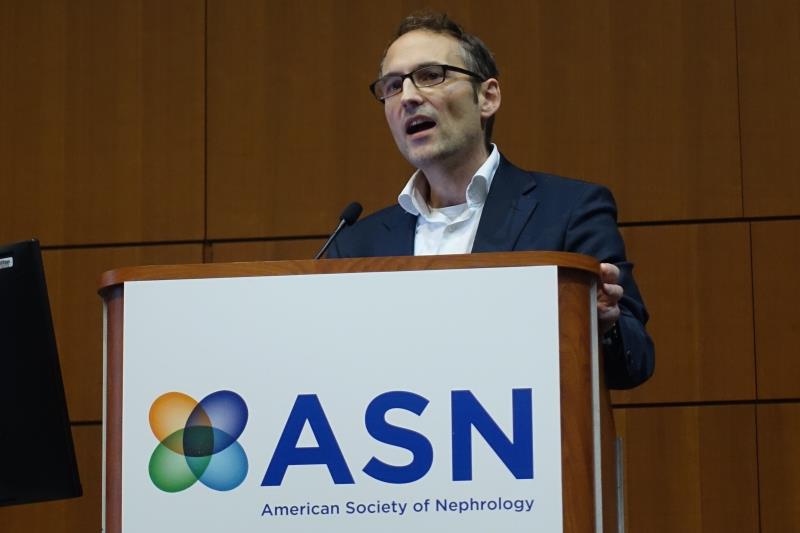 Dr Christian Ott from the Friedrich-Alexander University Erlangen-Nürnberg at Erlangen, Germany
Dr Christian Ott from the Friedrich-Alexander University Erlangen-Nürnberg at Erlangen, GermanyCombination therapy with empagliflozin plus linagliptin (E+L) reduces glomerular filtration rate (GFR), whereas metformin plus insulin glargine (M+I) confers benefits for both GFR and renal plasma flow (RPF) in type 2 diabetes mellitus (T2DM). The haemodynamic mechanism underlying these effects involves a decrease in efferent resistance with E+L and an increase in afferent resistance with M+I, according to the results of a randomized controlled trial presented at the American Society of Nephrology (ASN) Kidney Week 2019.
“Combination of insulin with oral antidiabetic drugs is a valid option, but oral combination therapy emerged as an alternative treatment in T2DM,” said principal researcher Dr Christian Ott from the Friedrich-Alexander University Erlangen-Nürnberg at Erlangen, Germany. “However, the intrarenal and renal haemodynamic profile[s] of such combination therapies ha[ve] not been evaluated so far.”
To close the gap, Ott and his team examined the effect of a 3-month treatment course with E+L (10 mg and 5 mg orally, respectively) against that of M+I (dose adjustments performed according to glucose levels) on the renal and intrarenal haemodynamic profiles of 100 T2DM patients (mean age, 60.3 years; 73.0 percent male).
Renal haemodynamics were assessed using the current gold-standard of constant-infusion input-clearance technique with para-aminohippuric acid and inulin for RPF and GFR. Intrarenal haemodynamics were calculated according to the Gomez formula.
There was a greater reduction in HbA1c observed with M+I than with E+L group (p=0.001) due to the multiple dose adjustment of insulin glargine. For this reason, all analyses between M+I and E+L were HbA1c-adjusted to evaluate the glucose independent effects of the two therapies. E+L produced superior effects on body weight (p<0.001), body mass index (p<0.001), and both ambulatory 24-h systolic and diastolic BP (p=0.004 and p=0.036, respectively). [ASN 2019, abstract SA-OR083]
Results for renal haemodynamics revealed that in the E+L group, GFR decreased substantially (127 vs 120 ml/min; p=0.003) but RPF remained unchanged (623 vs 615 ml/min; p=0.536). In comparison, the M+I group achieved significant reductions in both GFR (127 vs 120 ml/min; p=0.001) and RPF (653±150 vs. 600±121 ml/min, p<0.001), and these effects were clearly more favourable than in the E+L group (p<0.001).
In terms of intrarenal haemodynamics, E+L treatment had no marked impact on resistance of afferent arteriole (RA; p=0.116) but led to a decrease in resistance of efferent arteriole (RE; p=0.001). Conversely, M+I yielded a reduction in RA (p=0.006) but had no significant effect on RE (p=0.538). This finding indicates that treatment effects on RA (p<0.001) and on RE (p<0.001) were significantly different between the two groups.
The study population included adult T2DM patients (age, 18–75 years) with HbA1c levels ≥6.5 percent. All patients had been using metformin (850 or 1,000 mg twice daily) for at least 2 months prior to screening visit.
Exclusion criteria were as follows: any other form of diabetes than T2DM, HbA1c levels >10.5 percent, fasting plasma glucose >240 mg/dl, urine albumin-to-creatinine ratio (UACR) ≥300 mg/g, estimated GFR <60 ml/min/1.73m2, congestive heart failure NYHA stage III and IV, and use of loop diuretics. None of the patients included were exposed to insulin, glitazone, gliptin or SGLT-2 inhibitor within the past 2 months.